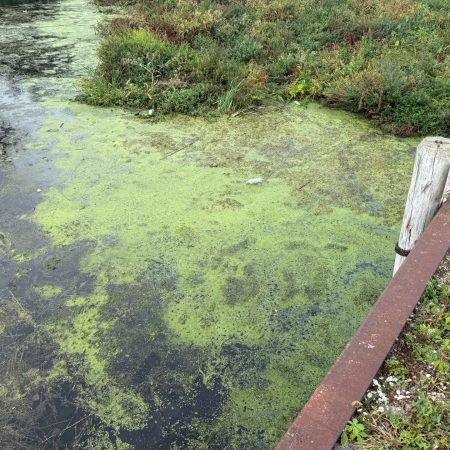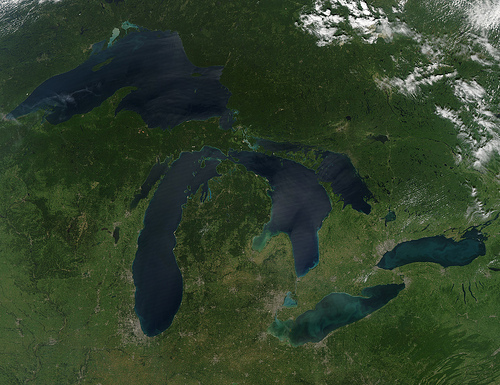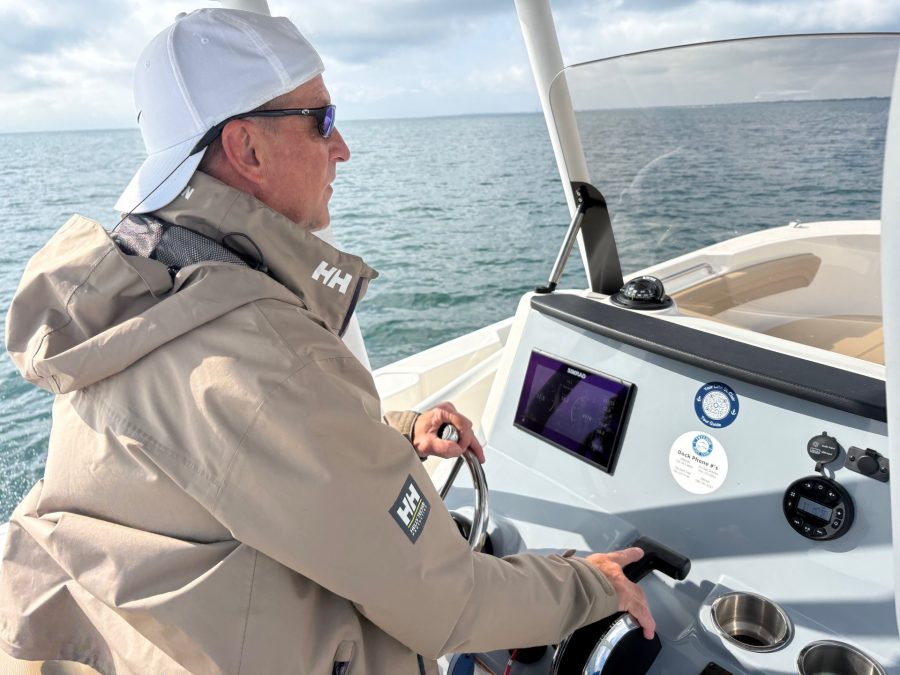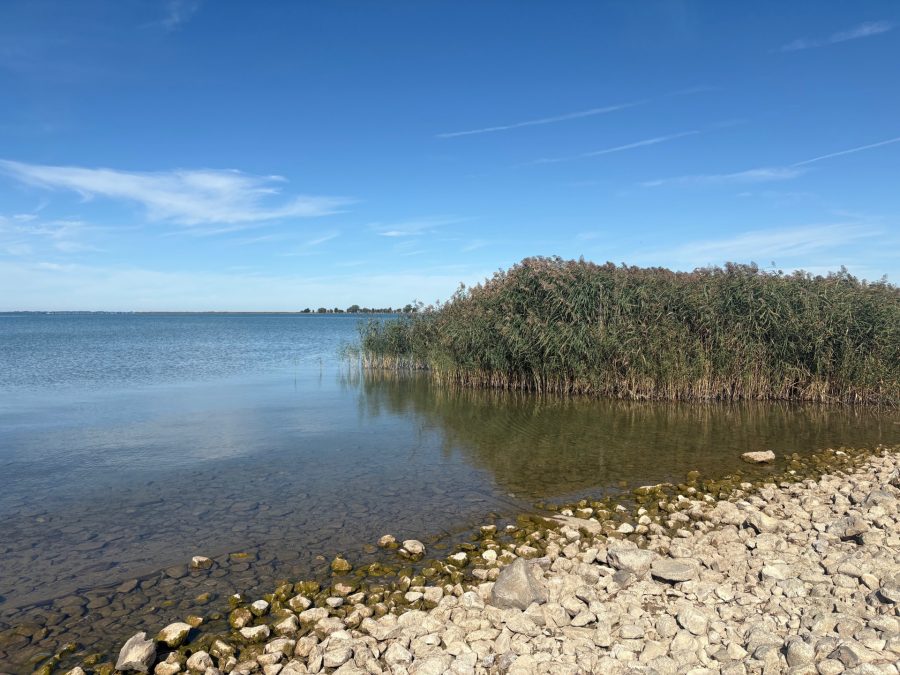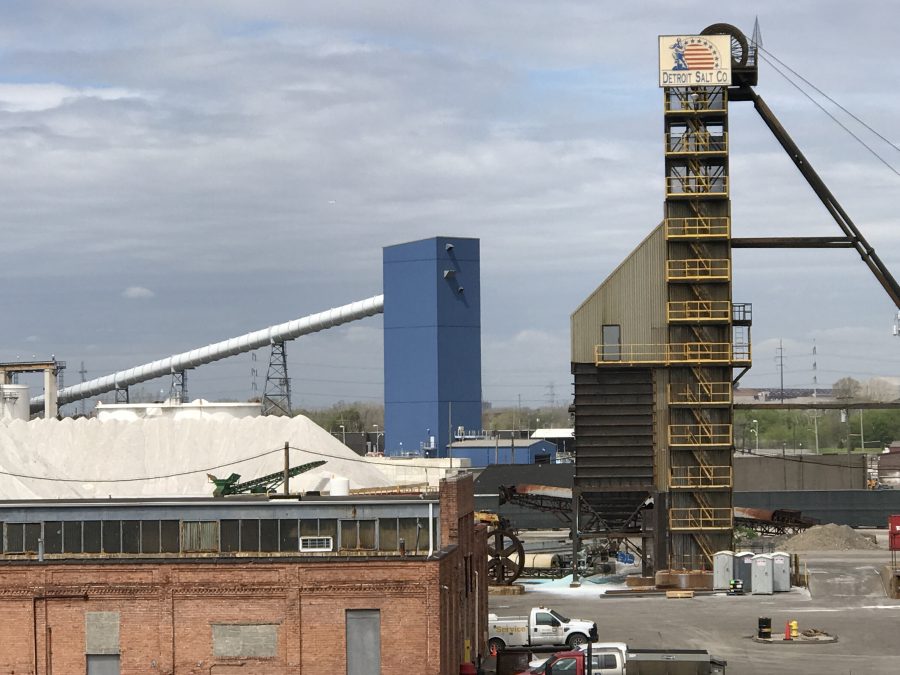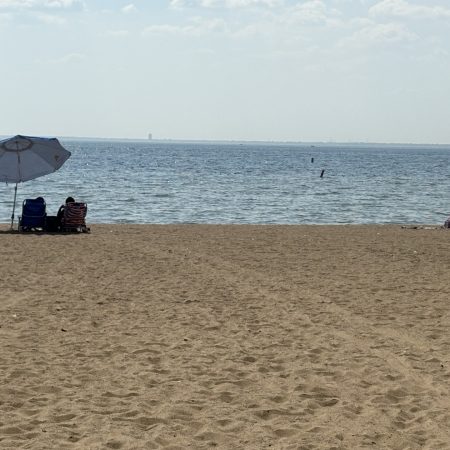Muck runs amok in Lake St. Clair
Harmful algal blooms form in western Lake Erie every summer. Scientists monitor the water for toxic bacteria and caution people not to swim in areas where they see green scum on the surface.
Lake St. Clair has its own algae problem. It has fascinated scientists and frustrated lakeshore residents.
What is it?
Its scientific name is Microseira wollei, but folks in Macomb County have their own name for it—the “muck.”
M. wollei has been a problem in the lake since at least 2010. That’s when large mats of algae were seen floating on the surface of the water near the Lake St. Clair Metropark beach in Harrison Township.
It caught the attention of biologists, including Donna Kashian. She’s the director of Environmental Science at Wayne State University. Kashian and three other scientists went to the beach in 2010 to take water samples and study the algae, which had a different name at the time, Lyngbya wollei. Whatever one calls it, Kashian says it’s not hard to spot.

“It forms these little balls,” she says. “When you’re walking along the beach, you’ll see these ribbons, essentially along where the water’s washing up, where you’ll see the muck accumulating.”
How bad is it?
The muck has spread to other parts of Lake St. Clair over the last 15 years. Steve Dobreff owns the Freedom Boat Club in Harrison Township. He says it has grown so thick in some places that people can’t use their docks.
“That guy over there has a boat launch,” Dobreff says, pointing to an area on Campau Bay near the boat club. “This guy over here used to have a dock…that’s gone.”
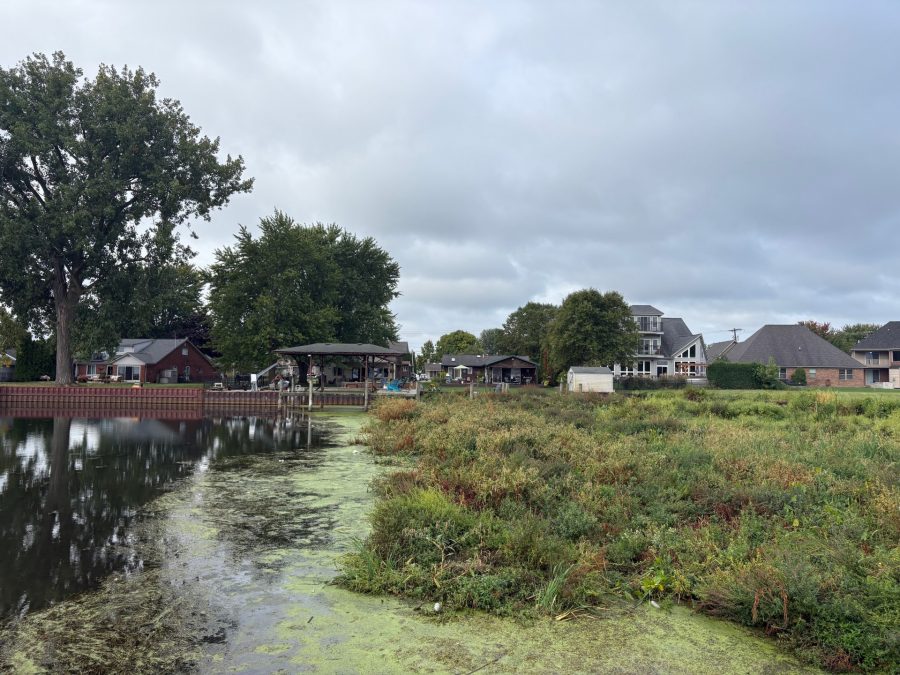
Dobreff says the muck has even fouled the water near the lakeshore neighborhood where he grew up near L’anse Creuse Bay.
“This was beautiful water, and it was all sandy beaches,” he says. “This is where we spent the majority of our time growing up right here on this dock and hanging out right here in this area.”
Now, Dobreff says, the muck has made it unswimmable.

How did it get here?
But where did the muck come from? Prof. Kashian says the explanation is murky. She says it turned up in Lake Erie years before appearing upstream in Lake St. Clair, which is kind of backwards.
“Usually things move downstream, not upstream,” she says. “So we don’t know if it was transported by boats or it was possibly there at some low level.”
However long it’s been there, Kashian says removing the muck won’t be easy. She says warmer water, more frequent storms, sewage discharges, and fertilizer runoff are all variable factors in its growth.
“I think we’re going to see patterns where some years we have more of it, and then other years we won’t see it,” she says.
Cutting off its “food” might help
One way to see less muck might be to reduce combined sewer overflows into the lake. Kashian says the algae trap E. coli, a common cause of beach closures.
Macomb County Public Works Commissioner Candice Miller says her department has reduced CSOs by half since she took office and will expand its infrastructure in 2026 to keep more sewage out of the lake.
“We’re going to be announcing another project, which will take us really just about to 0%,” Miller says. “I mean, you might have an occasional discharge, but we are doing pretty darn good.”

Miller says she’s working with state and federal agencies to solve the muck problem. The Michigan Legislature set aside $800,000 in its 2026 budget to start the process.
State Representative Alicia St. Germaine sponsored that appropriation. She says that’s how Alabama tackled the problem in its lakes.
“They removed it and then treated it with an algaecide, and they mitigated it by more than 80%” St. Germaine says.
What’s being done about it?
The Army Corps of Engineers published a study in 2023 showing that algaecides are effective at controlling M. wollei. But eradicating the muck is unlikely because it’s so widespread. Instead, the corps has proposed a plan to manage the algae growth and limit its effects.
Rep. St. Germaine says the sooner officials can attack the muck, the sooner people in her lakeshore district can get some relief.
“I have visited several constituents who can’t even go outside and sit on their patio because this algae, this toxic algae, is smelly and gross and even hard to look at,” she says.
Like the algae that grow in Lake Erie, M. wollei can produce toxins that can cause liver and neurological damage. Prof. Kashian says she and her colleagues looked for the gene that produces those toxins and did not find it in this strain of algae.
For now, the muck has given Kashian and her classes at Wayne State plenty to study.
Trusted, accurate, up-to-date.
WDET strives to make our journalism accessible to everyone. As a public media institution, we maintain our journalistic integrity through independent support from readers like you. If you value WDET as your source of news, music and conversation, please make a gift today.Donate today »
The post Muck runs amok in Lake St. Clair appeared first on WDET 101.9 FM.
